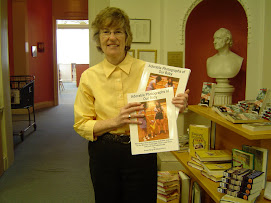Here is information on being the best caregiver you can be
Here are more interesting dementia brain boosting activities
Alzheimer's and Dementia Weekly
Transcript
The LOW ASSIST objects are all about color-contrasts. In this comparison image, the left plate is a color which contrasts the food. People need to be able to locate the food in order to pick it up.
This logic follows through to the cup, allowing people to easily locate handle and rim.
The MEDIUM ASSIST pieces address dexterity. It can become quite difficult to pick food up.
This plate offers an overhang to help push the food onto the spoon.
This cup challenges the need to provide two handles, avoiding it resembling a baby-cup, as shown earlier. The easiest grip to offer is that of putting your hand around the entire cup. The grip is thus insulated with neoprene to facilitate the drinking of hot liquids.

In this comparison image, the left plate is a color which contrasts the food. People need to be able to locate the food in order to pick it up.
The HIGH ASSIST range is aimed at creating a set of tools for assisting residents who can no longer feed themselves.
They are designed to be light and easy for carers to hold, which encourages them to bring the food into the sensory range of the residents, so they can see and smell what they are eating.
Another area that we have been looking at is the table. When used in a common area, it should be set 30 minutes in advance of mealtimes to encourage anticipation and appetite.
Use objects and patterns which are synonymous with dining to reinforce what activity is about to take place.
We have also made the underside flat, for wheelchair access. Existing tables like this one, which have support structures underneath, make it difficult for residents to get close to the food.
This means they have to lift the food over their laps, leading to spillages. This, in turn, could lead to having to wear rather stigmatizing bibs.
Finally, we have been looking at hanging additional lighting directly over tables, some older people needing three-times as much light as that of a younger person.
The light toggles through three light-levels by passing one's hand closely underneath, the idea being that a carer can tune each table-light to the residents' need, without having to run around to locate dimmer switches.
I have talked about eating, but we are only half-way through what we are planning. Next year, I will be joined by another designer, Nick Reisenbury and together we will be looking at activities and bedrooms. The results will join our findings in eating and culminate in design-guidelines this time next year.
go to Best Designs for Comfortable Eating for the video








No comments:
Post a Comment